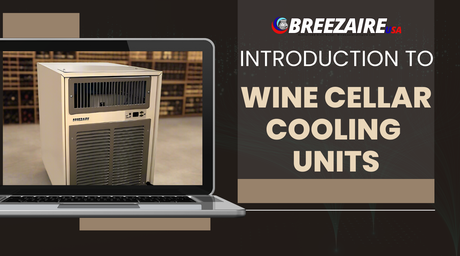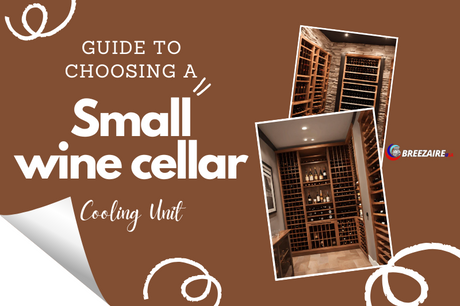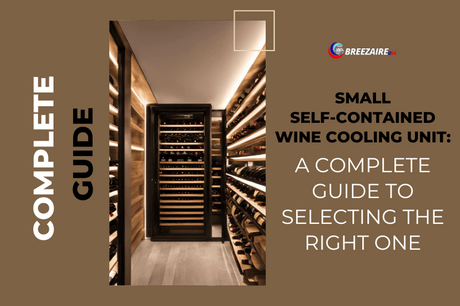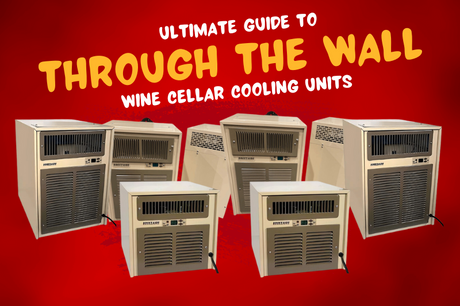Got a Closet? You Might Have a Wine Cellar Waiting
By Jim Hopper, Wine Cooling Expert
You don’t need a basement to store your wine properly. With the right tools and layout, you can transform a standard closet wine cellar into a fully functional, climate-controlled space. Whether you’re aging a few hundred bottles or want a stylish display for your collection, a Breezaire WKCE wine cooling system provides the performance you need in a compact form.
🛠️ New to wine cellar construction? Start with our Complete Wine Cellar Installation Guide to learn about BTU sizing, moisture control, and wall insulation best practices.
This DIY wine cellar guide shows you how to build your own wine closet, step-by-step, from sealing and insulating to choosing the perfect unit.

1. How Much Does It Cost to Build a Closet Wine Cellar?
You can build a closet wine cellar for $1,000 to $4,000, depending on how much you customize your racks, finishes, and cooling integration.
| Component | Estimated Cost |
|---|---|
| Breezaire WKCE Cooling Unit | $1,200–$1,600 |
| Vapor Barrier + Thick Insulation | $250–$600 |
| Custom or Modular Racks | $250–$800 |
| Glass or Solid Door Upgrade | $300–$1,000 |
| Electrical & Power Cords | $100–$300 |
| LED Lighting (Optional) | $50–$200 |
💰 Looking to save? Go with modular racks, a solid-core door, and basic lighting.
2. How Small Can a Wine Closet Be and Still Work?
Closets as small as 30 to 50 cubic feet can serve as effective wine cooling environments—as long as they’re insulated, sealed, and use the right unit.
📐 Minimum Specs:
- Dimensions: At least 30” W × 24” D × 84” H
- Wall thickness: Minimum 2x4 framing for insulation
- Ambient temp: Stable home interior (65°F–75°F)
- Racks to store 100–250 bottles
- Front-exhaust wine cooling system (no rear venting needed)

3. Choosing the Best Breezaire Unit for a Wine Closet
The Breezaire WKCE Series is the top choice for compact spaces like cabinets or closets.
🔧 Breezaire WKCE Features:
- Front-Exhaust Design: Allows installation in enclosed areas
- Low Noise Output: Great for shared walls or bedroom adjacents
- Precise Humidity Control: Maintains ideal 50–70% humidity
- Compact Fit: Installs directly through an interior wall
📦 Popular Models:
- WKCE 1060: Ideal for wine closets under 140 cu. ft.
- WKCE 2200: Perfect for wine closets up to 265 cu. ft.

4. Do You Need a Glass or Solid Door for a Wine Closet?
Either can work—if it’s properly insulated.
| Door Type | Pros | Considerations |
|---|---|---|
| Solid-Core | High insulation, low cost | Traditional appearance |
| Insulated Glass | Showcases collection | Must be dual-pane and sealed |
| Panel Door with Insert | Customizable | Requires tight weather seals |
✅ Add door sweeps and weather stripping to eliminate air leaks.
5. How to Insulate and Seal a Closet Wine Cellar
Wine closet performance depends entirely on how well it holds cold, dry air—and blocks hot air and moisture.
🧱 Installation Steps:
- Vapor Barrier First: Staple 6-mil plastic sheeting on the warm side (inside the walls and ceiling).
- Thick Insulation: Use R-19 fiberglass batts or 2” foam board with foil backing.
- Seal Electrical Boxes: Use fire-rated caulk and foam gaskets behind switch/outlet covers.
- Don’t Skip the Ceiling: Heat rises—don’t give it an escape path.
- Finish with Airtight Trim: Caulk baseboards, crown, and light fixture gaps.

6. Electrical & Power Planning for Your Wine Closet
Closets often lack outlets, so plan your power wisely.
⚡ Electrical Tips:
- Use a dedicated 15–20 amp circuit
- Install grounded outlet for the power cord
- Avoid extension cords (voids warranty)
- Keep power wires accessible for servicing
💡 Add a light switch-timed LED to prevent heat buildup
7. Managing Airflow & Temperature in Tight Spaces
Proper airflow = longer unit life + stable storage.
🌀 Tips:
- Leave 6–12” of clearance in front of the cooling unit
- Use open racking near airflow zone
- Allow air return at the top of the closet
- Minimize heat from lights and electronics

8. Should You Plan for Power Outage Protection?
A short power outage won’t hurt your wine—but frequent ones can.
🛡️ Best Practices:
- Add a backup battery (UPS) for the fan/thermostat
- Consider a whole-house generator
- Use a Wi-Fi temperature sensor with mobile alerts
✅ Summary: DIY Wine Closet Checklist
- Breezaire WKCE Cooling System
- R-19 insulation + 6-mil vapor barrier
- Solid or dual-pane glass door
- Sealed power cord and grounded outlet
- Open-style racks (modular or custom)
- LED lighting with switch or timer
- Optional UPS or sensor for power outage monitoring
🛒 Start Building Your Wine Closet Today
A closet wine cellar offers the perfect balance of affordability and luxury—and Breezaire’s WKCE units make it easy.
📞 Need Help? Contact Breezaire USA
- Phone: 1 (800) 702-1381
- Email: support@breezaireusa.com
✅ Expert guidance
✅ In-stock WKCE models
✅ Fast U.S. shipping








